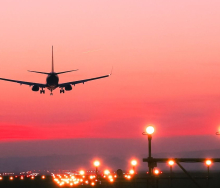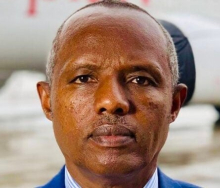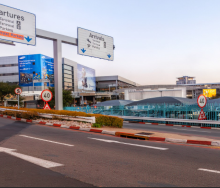ONCE touted by
Airbus as the “future
of long-distance
travel”, the A380 is being
retired.
Airbus ceo Tom Enders
announced last month
that Airbus will cease
deliveries of the A380 in
2021.
The A380 was Airbus’s
answer to the Boeing
747 and was considered
the flagship of the 21st
century – standing out
as the largest passenger
aircraft in the world and
the first to sport four
turbo prop engines.
With the A380, Airbus
bet big on high passenger
volumes, in part due
to constrained capacity
at large airports, which
resulted in a scarcity
of landing slots. The
concept of an aircraft
that was essentially two
in one made sense in
this context. Airbus vp
marketing, Chris Emerson,
said the A380 offered
airlines the ability to pick
up the most capacity
during peak travel times,
optimising the most
revenue.
The aircraft was especially
well-suited to hub-and-spoke
models, such as that of
Emirates, which has over
100 A380s in its current
fleet.
Boeing took a different
strategy based on an
increase in point-to-point
traffic to secondary cities,
where smaller, more fuelefficient aircraft were better
suited to lower passenger
numbers on long-haul
flights.
Aviation commentator Sam
Chui says that while a few
airlines do operate a huband-spoke model, the trend
in the industry today is to
operate direct flights using
smaller long-range aircraft,
point-to-point. Aircraft like
the Boeing 787 Dreamliner
and A350 are better suited
to this strategy.
Advances in engineering
have also resulted in
newer aircraft coming on
stream, offering better
fuel efficiency than the
A380 for the equivalent
number of passengers.
Airbus’s decision to
discontinue production
of the aircraft followed
Emirates’ reduction of
its A380 order book from
162 to 123 aircraft. The
carrier will take delivery of
a further 14 A380s and
has 40 A330-900s and
30 A350-900s on order.
“As a result of
[Emirates’] decision,
we have no substantial
A380 backlog and hence
no basis to sustain
production, despite all our
sales efforts with other
airlines in recent years.
This leads to the end of
A380 deliveries in 2021,”
said Tom, adding that the
decision was a “painful”
one for Airbus.
Only six months passed
between Airbus’s decision
in December 2000 to
launch the aircraft and
the booking of
50 customer
commitments
from Emirates,
Air France,
Singapore
Airlines, Qantas,
Virgin and
International Lease
Finance Corporation,
an aircraft lessor.
Sam says there are over
300 A380-operated flights
a day, flying on 120 routes
to 60 destinations and
by 14 carriers. An A380
lands or takes off every two
minutes.
Many
travellers
love the A380 because
of its size, which many
passengers associate
with safety, as well as its
comfort and quietness .
Size really does matter – the end of the A380
29 Jul 2019 - by Tessa Reed
Comments | 0













